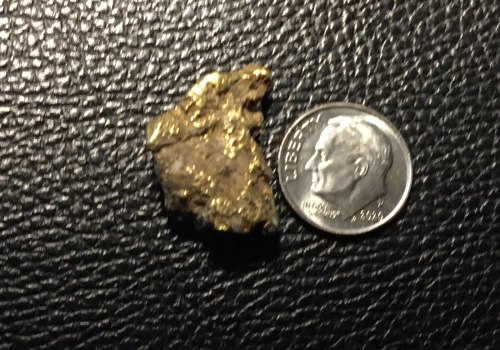Generally, investors should not allocate more than 5% to 10% of their portfolios to alternative assets such as gold. However, it's always important to consider your situation and your individual goals. Gold is often seen as a safe haven, a commodity that has maintained its long-term value. But this metal can be volatile in the short term.
Because of this volatility, the price of gold underperforms compared to the long-term price appreciation of traditional stocks. Consequently, conventional wisdom recommends having no more than 10% of your portfolio in gold as part of a well-balanced portfolio. Gold is often considered a good investment for diversification, as it may be less correlated with other assets, such as stocks or bonds. This means that the price of gold may be less affected by movements in other asset classes, which can help reduce overall portfolio risk.
Depending on your preferences and risk aptitude, you can choose to invest in physical gold, gold stocks, gold ETFs, and mutual funds, or speculative contracts for futures and options. Regardless of the form of gold you choose, most advisors recommend that you allocate no more than 10% of your portfolio to it. While other precious metals are also used as portfolio hedges, investing in gold has the advantage of high liquidity. Investing in physical gold can be a challenge for investors more used to trading stocks and bonds online.
This is particularly popular in China and India, the world's two largest markets, where consumers invest in gold jewelry to store their wealth and give as gifts during festivals and weddings. People who choose to invest in gold through options or futures contracts need to actively monitor their holdings in order to sell, renew, or exercise their options before they expire worthless. If you think gold could be a sure bet against inflation, then investing in coins, bullion, or jewelry is the path you can take to gold-based prosperity. Of all the ways to invest in gold, the riskiest is trading futures or options contracts, a form of speculative investment.
Throughout history, few investments have matched the popularity of gold as a hedge against just about any type of problem, from inflation to economic turmoil to currency fluctuations and war. They usually have just as many reasons to invest in the precious metal as there are methods to make those investments. Gold is considered a “safe haven asset” because when the prices of other investments, such as stocks or real estate, fall sharply, gold doesn't lose its value. However, it's important to note that investing in gold isn't risk-free and may not always offer a positive return.
If you're concerned about inflation and other calamities, gold can offer you a safe haven to invest in. In short, this law began to establish the idea that gold or gold coins were no longer needed to serve as money. In the 21st century, gold is valued not only for its industrial uses but also as an investment asset to store value, protect against inflation, and seek refuge in times of uncertainty. Whether gold is an appropriate investment for your portfolio at this time will depend on your personal circumstances and your risk tolerance.
If you decide to invest in gold bullion, it's also a good idea to keep up with the price of gold, so that you can choose the right time to buy. Most dealers update their prices based on current spot prices.







